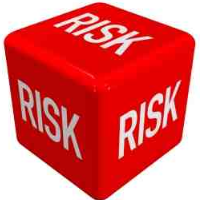State Develops Better Picture of Its Lousy Record on Environmental Justice

Who would have thought that the intersection of agriculture, industry, freeways and poverty would produce the worst environmental hot spots in the state?
Two years of fine-tuning the CalEnviroScreen interactive map from the state's Office of Environmental Health Hazard Assessment (OEHHA) have proven what most everyone in the area, if not the state, already knew: It sucks to be in Fresno, environmentally speaking, of course.
CalEnviroScreen 2.0, released this week, addresses a major complaint about two earlier incarnations of the pollution graphic that debuted in 2013 by zooming in on 8,000 census tracts, rather than the much larger 1,800 zip codes, to analyze the impact of myriad environmental and socio/economic factors. The online tool, created under the auspices of the California Environmental Protection Agency (Cal/EPA), added a number of refinements that identify communities affected by multiple sources of pollution in order to target them for assistance in pursuit of its environmental justice mission.
But the original breakdown of areas by zip code missed pockets of devastation that were balanced out by less-afflicted neighbors. 2.0 fixes that and refocuses attention on Fresno, where eight of the state's 10 worst tracts are. Kern and Los Angeles counties each had one.
Although CalEnviroScreen dropped race as a criterion when it released version 1.1—to facilitate the use of the tool by government entities that may be restricted from considering race/ethnicity—the calculator may still play a role in helping direct government funds to minority communities that tend to be most heavily impacted by pollution.
While race and ethnicity aren't part of the calculations, they are still a significant part of the corollary data. Not one tract in the 83 worst neighborhoods in the state had more than 23% white people. They were all overwhelmingly Latino except for one in Los Angeles County that was 25.9% African-American. Latinos were 19.5%.
2.0 refines the 1.1 findings that nearly two-thirds of residents in the top 10% most polluted ZIP codes were Latino, although they are just 38% of the population. Blacks, who are 6% of the population, are also overrepresented (10%) in the top 10%. Whites, who make up 40% of the population, constitute just 16%.
CalEnviroScreen ratings take into consideration a number of factors, including: income, population, ozone, particulate matter, diesel pollution, pesticides, chemicals from facilities, traffic, impaired water bodies, solid waste facilities, low birth rates, incidents of asthma, age, education and linguistic isolation.
2.0 added a few things and refined others. Unemployment rates and drinking water quality were included and models for measuring ozone, hazardous waste facilities and low birth weights were among those adjusted.
It is still uncertain to what use the CalEnviroScreen will be put by the state, but California law requires that 25% of funds raised through its cap-and-trade energy program be earmarked for those areas most heavily impacted by pollution. Then again, the state borrowed half a billion from the fund last year to pay bills and Governor Jerry Brown has proposed grabbing a big chunk in the future to fund high-speed rail.
So, for now, its main benefit may be for communities competing with Fresno for tourist dollars and real estate investments . . . and data visualization design gurus. CalEnviroScreen 2.0 really is a cool-looking graphic.
–Ken Broder
To Learn More:
Fresno Ranks No. 1 on California Pollution List (by Diana Marcum, Los Angeles Times)
New Map Could Refocus State's Pollution Battles (by Tony Barboza, Los Angeles Times)
Cal/EPA Identifies Racial Factor in Pollution Burden, then Removes It from Pollution Calculator (by Ken Broder, AllGov California)
Calenviroscreen Version 2.0 Draft and Webinar (Office of Environmental Health Hazard Assessment)
- Top Stories
- Controversies
- Where is the Money Going?
- California and the Nation
- Appointments and Resignations
- Unusual News
- Latest News
- California Forbids U.S. Immigration Agents from Pretending to be Police
- California Lawmakers Urged to Strip “Self-Dealing” Tax Board of Its Duties
- Big Oil’s Grip on California
- Santa Cruz Police See Homeland Security Betrayal in Use of Gang Roundup as Cover for Immigration Raid
- Oil Companies Face Deadline to Stop Polluting California Groundwater





